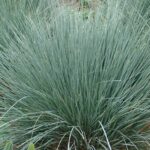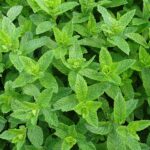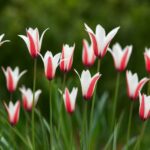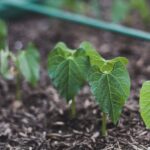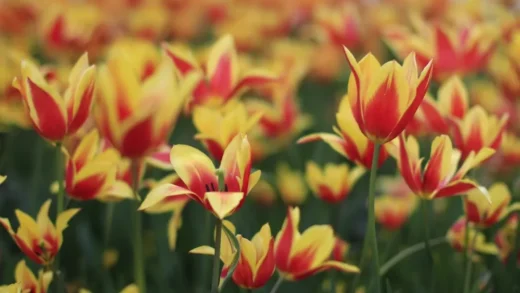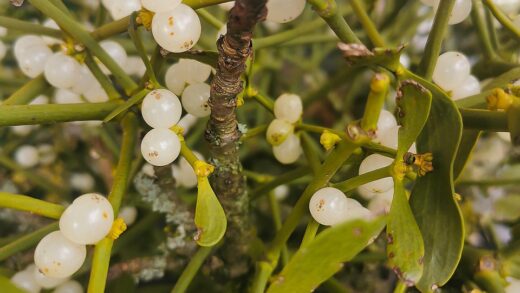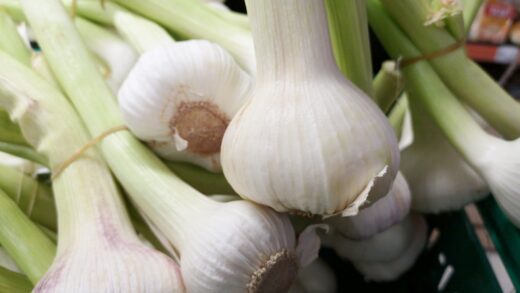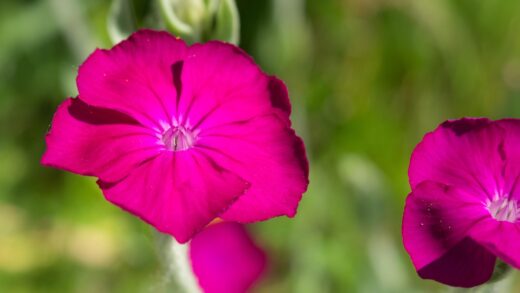The practice of pruning is a vital and proactive component in the cultivation of a healthy, attractive, and productive Hypericum androsaemum. Far from being a mere chore, thoughtful cutting is a dialogue with the plant, a way to shape its growth, enhance its natural beauty, and encourage its best performance. Proper pruning can rejuvenate an older shrub, create a more desirable form, increase the yield of flowers and berries, and improve overall plant health by promoting better air circulation. Understanding the right techniques, the appropriate timing, and the specific goals of each cut is essential to unlocking the full potential of this versatile and rewarding garden plant.
Pruning is not a one-size-fits-all activity; the type and severity of the cuts should be tailored to the specific objective. For a young plant, the goal might be to encourage a bushy, well-branched structure. For a mature but overgrown shrub, the aim could be a complete rejuvenation to restore its vigor. In other cases, the purpose might simply be to maintain a neat shape, remove damaged wood, or enhance the floral display. Each of these goals requires a slightly different approach and timing.
One of the most significant benefits of regular pruning is the management of the plant’s health. By selectively removing crowded or crossing branches from the center of the shrub, the gardener can dramatically improve air circulation through the foliage. This is a critical preventative measure against common fungal diseases like rust, which thrive in stagnant, humid conditions. Removing any wood that is clearly dead, damaged, or showing signs of disease also eliminates potential entry points for pathogens and removes sources of infection.
Beyond health and shape, pruning directly influences the plant’s flowering and fruiting capacity. Hypericum androsaemum flowers on new growth produced in the current season. Therefore, pruning back the old stems in late winter or early spring stimulates the plant to produce a flush of new, vigorous shoots. It is on these new shoots that the season’s flowers and subsequent berries will form. This makes pruning a powerful tool for maximizing the very ornamental features for which the plant is most prized.
The goals of pruning
One of the primary goals of pruning is to establish and maintain a strong, aesthetically pleasing structure. For a young Hypericum androsaemum, the initial pruning cuts are about building a good framework. This involves encouraging the development of multiple strong stems from the base, which will prevent the plant from becoming a leggy, single-stemmed specimen. Over time, maintenance pruning helps to keep the shrub’s natural rounded shape, preventing it from becoming an untidy, tangled mass of branches.
More articles on this topic
Improving and maintaining the plant’s vigor is another central objective. As the shrub matures, some of the older, woodier stems can become less productive, producing fewer leaves, flowers, and berries. The practice of renewal pruning, where the oldest stems are systematically removed over several years, encourages the continuous production of new, energetic growth from the base. This keeps the plant in a constant state of rejuvenation, ensuring it remains dynamic and productive throughout its life.
The removal of the three ‘D’s—dead, damaged, and diseased wood—is a fundamental goal of pruning for any plant. Dead wood is not only unsightly but can also become a host for pests and diseases. Damaged branches, whether broken by wind, snow, or mechanical injury, provide an easy entry point for pathogens. Diseased stems should be removed promptly to prevent the spread of the infection to the rest of the plant. This sanitary aspect of pruning is a cornerstone of good plant health management.
Finally, pruning is a tool for controlling the size of the plant and keeping it in proportion with its surroundings. While it’s always best to plant a shrub where it has room to reach its mature size, sometimes pruning is necessary to keep it from encroaching on a pathway, crowding out neighboring plants, or blocking a window. A well-timed cutback can manage its height and spread effectively without sacrificing its overall health or natural form, ensuring it remains a well-behaved member of the garden community.
The best time of year to prune
The timing of pruning is critical and is determined by the plant’s flowering habits. Since Hypericum androsaemum flowers on new wood—that is, on stems that grow in the current season—the best time for any significant pruning is in late winter or early spring, just before this new growth begins. Pruning at this time allows the gardener to shape the plant and remove any winter damage without sacrificing the current year’s floral display. In fact, this pruning is what stimulates the new growth that will bear the flowers.
More articles on this topic
Conducting the main prune during the plant’s dormancy in late winter has several advantages. With the leaves absent (or sparse in milder climates), the overall structure of the shrub is clearly visible, making it much easier to identify which branches need to be removed. It is simpler to spot crossing branches, weak stems, and to assess the overall framework of the plant. Pruning during dormancy is also less of a shock to the plant, as it is not actively growing.
Light trimming and shaping can also be done during the growing season if necessary. This might involve pinching back new shoots to encourage bushiness or cutting back a stray branch that is growing out of bounds. Deadheading, or the removal of spent flowers, can also be done in the summer if the goal is to try and encourage a second, smaller flush of blooms, though this comes at the expense of the ornamental berries. However, any major structural pruning should be deferred until the dormant season.
It is very important to avoid heavy pruning in the late summer or autumn. Making significant cuts at this time can encourage the plant to produce a flush of new, tender growth. This new growth will not have sufficient time to mature and harden off before the first frosts of winter arrive. As a result, it is highly susceptible to being killed by the cold, which not only looks unsightly but also wastes the plant’s valuable energy reserves just before it enters its dormant period.
Essential tools and techniques for effective cutting
Using the right tools is essential for making clean, precise pruning cuts that heal quickly. For the relatively thin stems of Hypericum androsaemum, a sharp, clean pair of bypass secateurs (pruners) is the most important tool. Bypass pruners have two curved blades that pass by each other like scissors, making a clean cut without crushing the plant tissues. Anvil pruners, which have a single blade that closes against a flat surface, can crush stems and should be avoided for live wood. For larger, older stems, a pair of loppers or a small pruning saw may be necessary.
Keeping the tools sharp and clean is paramount. Dull blades can tear stems, creating ragged wounds that are slow to heal and are more susceptible to disease. It is also crucial to clean the blades between plants, and especially after cutting any diseased wood. This can be done by wiping the blades with a cloth soaked in rubbing alcohol or a dilute bleach solution. This simple step of tool hygiene prevents the accidental transmission of pathogens from one part of the garden to another.
The technique of the cut itself is also important. When pruning back a stem, the cut should be made about 5-6 millimeters above a healthy, outward-facing bud. Making the cut at a slight angle that slopes away from the bud will allow water to run off, preventing it from pooling and potentially causing rot. An outward-facing bud is chosen to encourage the new shoot to grow outwards, which helps to create a more open, less congested structure for the shrub.
When removing a branch entirely, the cut should be made flush with the larger stem or branch from which it originates, just outside the slightly swollen area known as the branch collar. The branch collar contains specialized cells that help the plant to heal the wound quickly. Leaving a stub behind is undesirable as it will die back and can become a potential entry point for decay and disease. A clean cut close to the collar allows the plant to seal the wound effectively.
Hard pruning for rejuvenation
Over time, an older Hypericum androsaemum can become woody, overgrown, and less vigorous, with reduced flowering. In such cases, a hard pruning, also known as rejuvenation pruning or coppicing, can be an effective way to restore the plant to its former glory. This drastic-sounding technique involves cutting back all of the stems to within 15-20 centimeters of the ground. While it may seem extreme, this hardy shrub responds exceptionally well to this treatment.
The best time to perform a hard rejuvenation prune is in the late winter or early spring, before any new growth has started. This timing allows the plant to direct all of its stored energy reserves in the root system into producing a flush of strong, new shoots from the base as soon as the weather warms up. Performing this cut later in the spring, after the plant has already leafed out, would be a much greater shock and would waste the energy already expended on that initial growth.
After the hard prune is completed, it is beneficial to provide the plant with some supportive care to encourage a strong recovery. This includes clearing away any weeds from around the base of the plant to reduce competition for water and nutrients. Applying a balanced, slow-release fertilizer and a layer of organic compost or mulch around the plant will provide the essential nutrients needed to fuel the vigorous new growth that will emerge.
The new shoots that arise after a hard prune will be strong, healthy, and highly productive. The resulting shrub will have a much-improved shape and density, and it will flower and fruit much more prolifically than the tired, old plant it replaced. While the plant will be smaller in its first season after the cutback, this short-term sacrifice is well worth the long-term benefit of a completely renewed and revitalized shrub. This technique can effectively reset the clock, adding many more years to the plant’s ornamental life in the garden.







